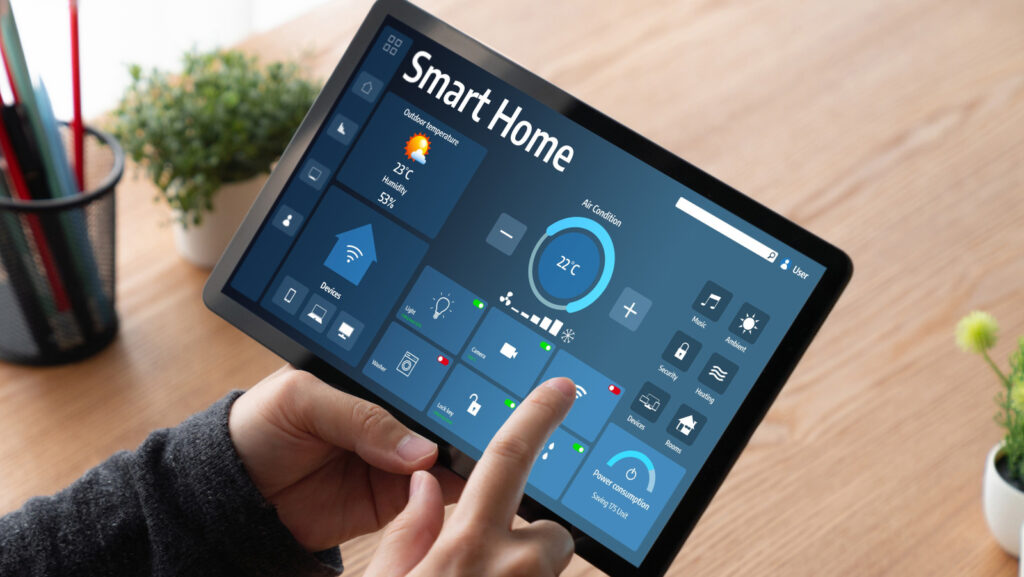
The Raspberry Pi, a compact computer introduced by the Raspberry Pi Foundation in 2012, has revolutionized the way users engage with technology. Designed to provide affordable computing, it has become a cornerstone for DIY enthusiasts, particularly in the realm of smart home automation. With devices available for as little as $50, this tiny powerhouse consumes less than 27 watts of power while offering capabilities that rival larger computers. Its latest iteration, the Raspberry Pi 5, enhances performance and graphics support, making it an even more attractive option for tech-savvy homeowners looking to elevate their living spaces.
Homeowners are leveraging the Raspberry Pi’s versatility to create innovative projects that enhance comfort, security, and efficiency. Here are ten standout applications that showcase the potential of this remarkable device.
Smart Home Hub with Home Assistant
Transforming your Raspberry Pi into the central hub of your smart home is achievable with Home Assistant. This open-source platform allows users to manage smart devices—such as lights, thermostats, and cameras—from a single dashboard. Notably, Home Assistant operates locally, ensuring that automations function even without an internet connection, thus enhancing privacy. Users can customize their home experience with advanced automations, such as adjusting the thermostat when leaving home or dimming lights at sunset. To begin, a Raspberry Pi 4 or 5 with at least 2GB RAM and a 32 GB micro-SD card are required.
Automated Blinds Controller
Automating window blinds is not just a luxury but a practical application of the Raspberry Pi. By connecting the device to a servo motor and sensors, homeowners can control their blinds based on time of day or room conditions. This project promotes energy efficiency by minimizing reliance on heating and cooling systems. Using the gpiozero library simplifies the control of connected hardware, allowing for seamless integration with voice-controlled systems. The result is a comfortable and energy-efficient environment.
Smart Mirror with MagicMirror2
Imagine starting your day with a mirror that provides weather updates, calendar reminders, and news headlines. The MagicMirror2 software enables this transformation, converting a two-way mirror into an interactive display powered by a Raspberry Pi. The setup involves a monitor and two-way mirror glass, with the software displaying useful widgets. Customizable options allow users to tailor their mirrors with additional features, making it an impressive addition to any room.
Personal Cloud Storage with Nextcloud
For individuals concerned about data privacy and cloud storage costs, a Raspberry Pi can serve as a personal cloud server using Nextcloud. This software provides a secure alternative to mainstream services like Google Drive or Dropbox, enabling users to store and access files locally. The setup is user-friendly, allowing for document sharing and automatic photo backups, while additional features like calendar syncing enhance its functionality.
Smart Garage Door Opener
The Raspberry Pi can also simplify garage access by acting as a smart garage door opener. By integrating a relay module and web app, users can monitor and control their garage door remotely via mobile devices. This project is easy to implement and can be expanded with sensors for added convenience and security.
DIY Smart Thermostat
Managing home temperature and energy expenses is seamless with a DIY smart thermostat powered by Raspberry Pi. By connecting temperature and humidity sensors, this system automatically adjusts heating and cooling based on user preferences. Studies from the U.S. Department of Energy indicate that such programmable thermostats can reduce annual energy costs by up to 10%.
Indoor Air Quality Monitor
A Raspberry Pi can also be used to monitor indoor air quality. With sensors that measure temperature, humidity, and particulate matter, users receive real-time alerts about air quality issues. The system can activate air purifiers or dehumidifiers as needed, ensuring a healthy living environment.
Garden Watering Automation
For gardening enthusiasts, a Raspberry Pi can automate plant watering, ensuring optimal moisture levels. By utilizing soil moisture sensors, the system activates a water pump as necessary, helping maintain healthy plants while conserving resources.
Whole-House Media Center with Kodi
Installing Kodi on a Raspberry Pi transforms the device into a comprehensive media center. Supporting various media formats, Kodi allows users to stream content while repurposing older hardware. With the Raspberry Pi 5’s upgraded graphics capabilities, playback quality is significantly enhanced.
DIY Door and Window Sensors
Enhancing home security is straightforward with Raspberry Pi door and window sensors. By employing wireless magnetic reed switches, homeowners can receive alerts whenever an entry point is opened. This system integrates with platforms like Home Assistant, allowing for notifications and automation of other smart devices.
The possibilities with Raspberry Pi are vast, and integrating these projects can create a cohesive smart home environment. By utilizing a single device, homeowners can manage multiple systems, enhancing their living spaces without the need for expensive commercial alternatives. As more users explore the potential of smart home technology, Raspberry Pi continues to stand out as a transformative tool, empowering individuals to customize their homes according to their unique needs and preferences.







